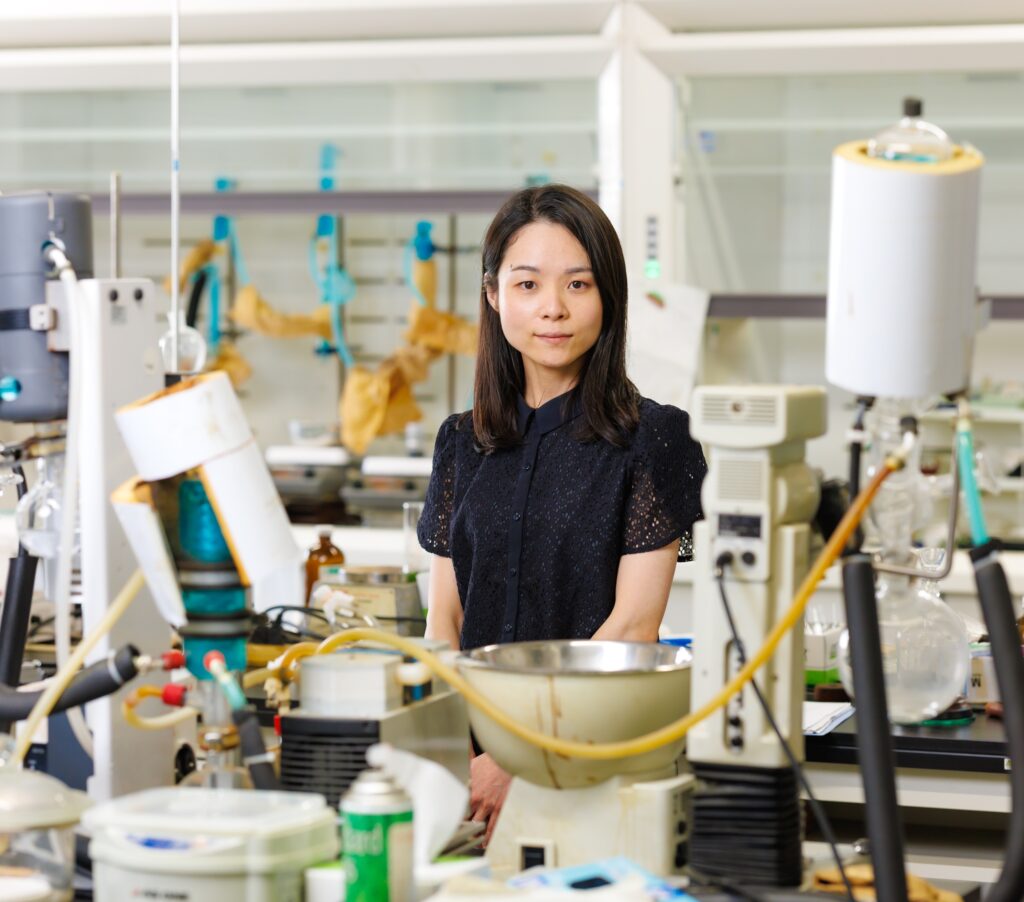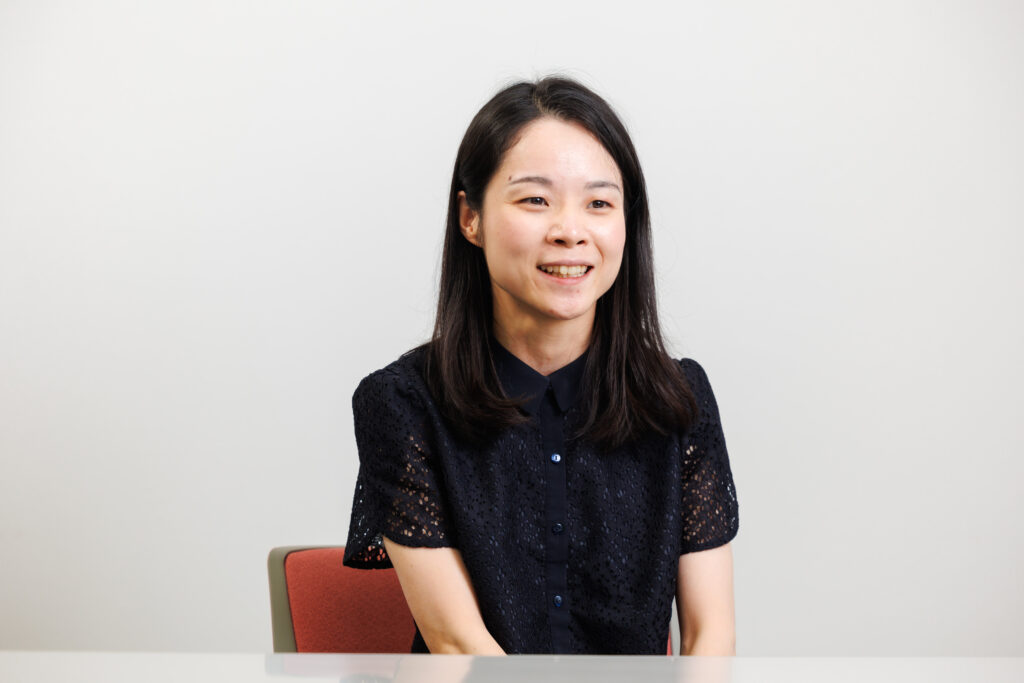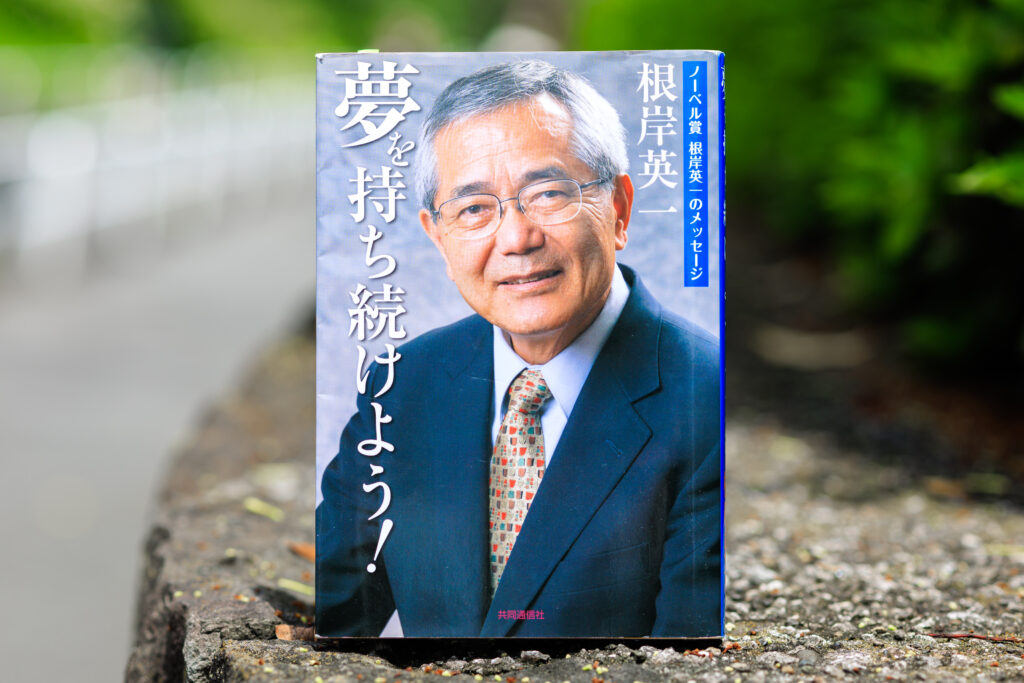
Associate Professor Tomoyo Misawa from the Faculty of Science and Technology works on designing and developing metal complexes that serve as catalysts for various chemical reactions. She talks about the progress of her research, which helps to realize artificial photosynthesis systems, create new energy, and even lead to countermeasures against global warming.
Metal complexes—formed by organic or inorganic atoms and/or molecules called ligands binding to a metal ion—exist in nature and within organisms. One familiar example is heme iron, formed by organic compound binding with iron ion and found in hemoglobin, a protein in our blood.
I specialize in metal complex chemistry, working to design and create metal complexes that serve as catalysts for various chemical reactions by binding a variety of ligands to transition metals such as cobalt, iron, and ruthenium. In particular, I focus on the development of metal complexes with a high rate of reaction under conditions close to temperatures and pressures normally found in nature.
Many metalloproteins found in nature have two or more metals serving as reaction centers. I seek to design and develop metal complexes that have two or more metals in a single molecule. I like the phrase “Learn from nature and go beyond nature.” This phrase also serves as motivation for my research.
Seeking metal complexes that encourage the oxidation reaction of water, methane, and other small molecules

Recently, I have been interested in photosynthesis. Plants use energy from sunlight to create oxygen and carbohydrates from water and carbon dioxide. The first step in photosynthesis is the splitting of water, which is an oxidation reaction where electrons are removed to release hydrogen ions and oxygen. The exact mechanism, however, has yet to be uncovered.
Research institutions around the world are currently advancing research to build artificial photosynthesis systems that mimic photosynthesis in nature. Potential applications include reduction of carbon dioxide as a global warming countermeasure and development of new energy as alternatives to petroleum. An important area of research is the oxidation reaction of water using metal complexes.
I undertake research in this area in hope that, if we can understand the oxidation reaction process of water and develop metal complexes that serve as catalysts for efficient reactions, we will significantly advance artificial photosynthesis research.
The conversion of methane (CH4) molecules is another captivating research theme. Methane’s global warming potential is 25 times greater than that of carbon dioxide. Research is underway to oxidize methane and convert it into methanol that can be used as fuel and such.
However, the C-H bond of methane is extremely strong. To break the C-H bond and oxidize methane using oxygenation, we need to develop metal complexes that have high energy.
I recently developed a metal complex that induces oxidation reaction of organic compounds with a smaller bond energy than methane. I hope to further advance this research to develop complexes that help methane oxidation.
The charm of research is coming across unexpected treasures
It takes time to design and develop new metal complexes. It requires persistence and dedication, taking several years to obtain results about the kind of reactions that a metal complex can be applied to.
Often, I encounter complexes and reactivity that are different from initial expectations. When that happens, one may think that the research has failed and the effort so far has been in vain. However, there is also the possibility of discovering previously unknown complexes and their reactions, which I see as coming across treasures. That is the charm of my current research.
The final goal of this research is to contribute to countermeasures against global warming and the creation of new energy from the aspect of molecular transformation. In my daily research, the most important thing is to start with experimentation instead of theories, and to carefully observe the results. I believe that repeatedly carrying out such a process will lead to the discovery of treasures.
The book I recommend
“Yume o Mochitsuzukeyo! Noberusho Negishi Eiichi no Messeji”(Hold onto Your Dreams! Message from Nobel Laureate Ei-ichi Negishi)
by Ei-ichi Negishi, Kyodo News

This is a book by Professor Ei-ichi Negishi, who received the Nobel Prize in 2010. I am genuinely interested in the life led by a researcher who was a Nobel laureate and read this book when I decided to embark on the path of a researcher.
-
Tomoyo Misawa
- Associate Professor
Department of Materials and Life Sciences
Faculty of Science and Technology
- Associate Professor
-
Received her Ph.D. in Science and Technology after completing the doctoral program at the Graduate School of Science and Technology, Sophia University. Assumed her current position in April 2023 after taking on the position of assistant professor at the Department of Materials and Life Sciences, Faculty of Science and Technology, Sophia University.
- Department of Materials and Life Sciences
Interviewed: July 2023